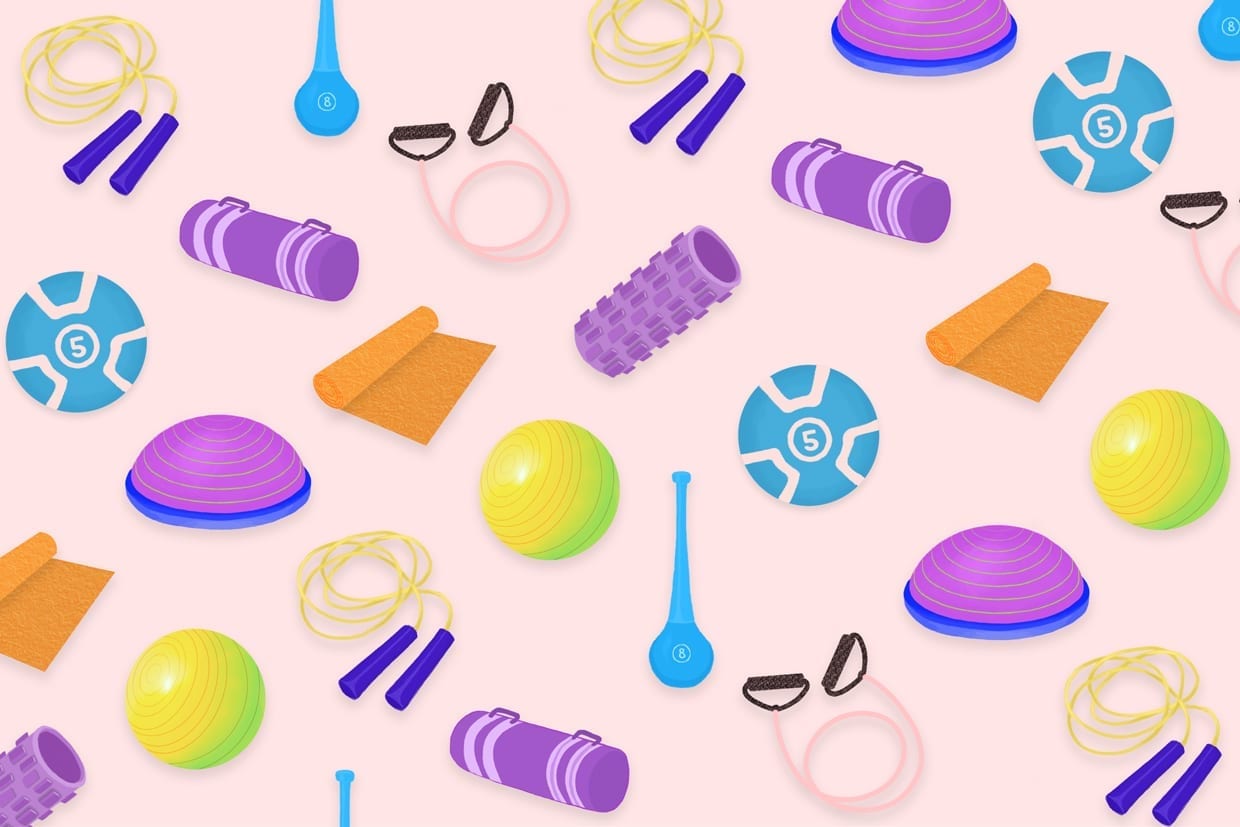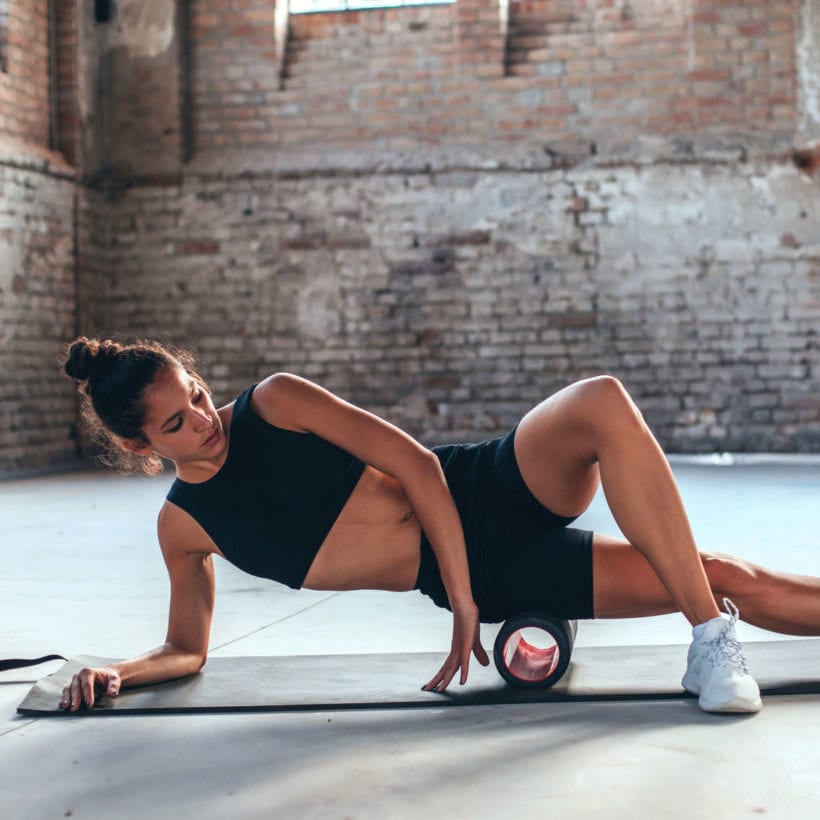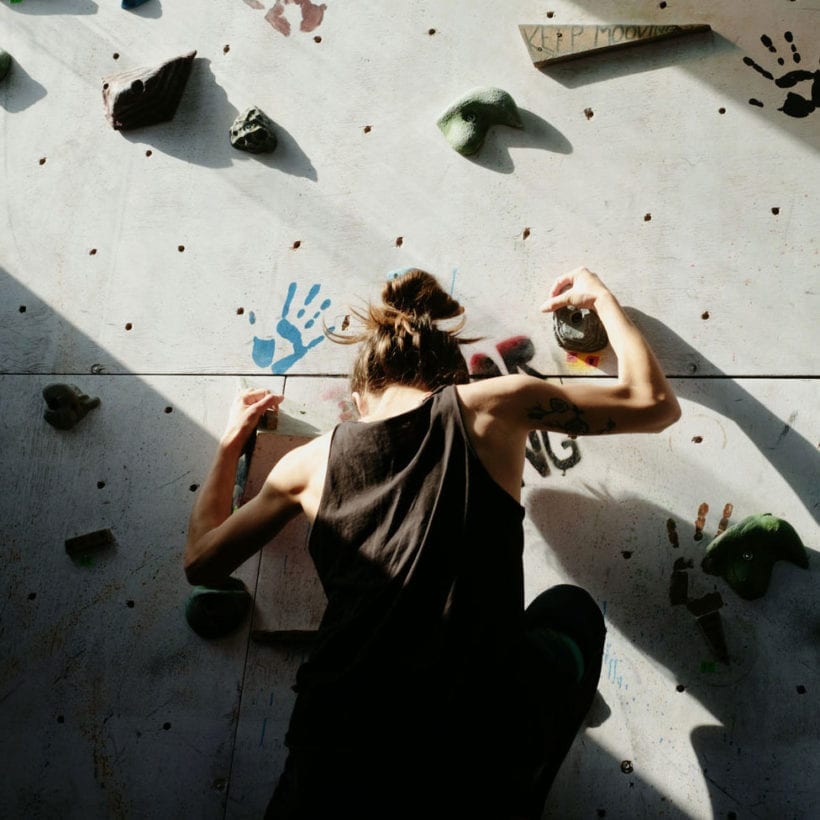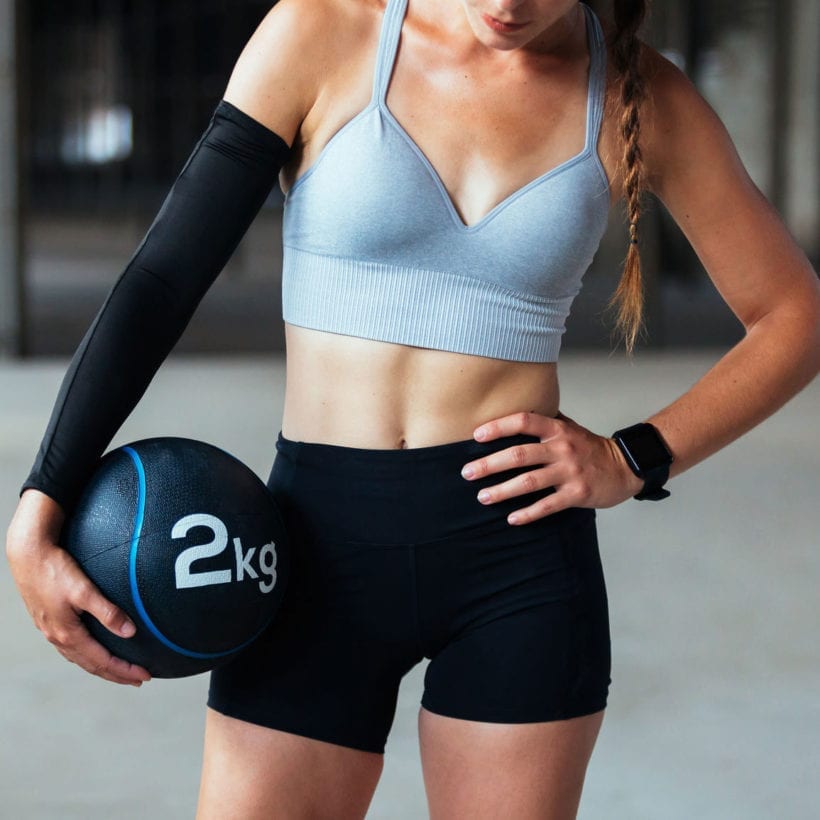There are many pros to working out at home: not having to wait in line for the bench press to become available, blasting your playlist on the stereo and grunting unapologetically all you want, to name a few. And now that there are snazzy Peloton bikes and smart mirrors dominating the market, the prospect of working out at home sounds all that more enticing. Add to that the fact that the joy of missing out (#JOMO) still permeates, and you will not need to look hard for a few choice excuses to not make it to the gym tonight. There is so much you can actually do at home with a simple set of key equipment. “You don’t need to have a lot of stuff for a good workout, your body is enough resistance,” says Bruna Carvalho, personal trainer at Bodies by Bruna in Houston. “You can do squats, push-ups, jumping jacks, mountain climbers, walking lunges, etc.” But to get the most out of each moment, it never hurts to have tools that will maximize your efforts.

Looped Resistance Bands
These are some of the most versatile pieces of equipment you can buy. “You can put them around your hips, knees or ankles for activation or stability exercises,” says Julie Bellis, group fitness manager at Equinox Gold Coast in Chicago. “They’re so good for precise movement exercises, and you can put them around your wrists, too.” There are packs that come with bands of different levels, so you can use more or less resistance depending on which movement you are making. “You can do bicep curls, sidewalks, bridges and even attach them behind the door and do rows,” adds Carvalho.

Band Tubing with Handles
These are a great addition to any strength training regimen, plus they are so light you can pack them up to go anywhere. Just like free weights, they usually come in a range of resistance levels. “You can step on it and do squats that way, you can do overhead presses, lateral raises with your arms, bicep curls and more,” says Bellis. “The tension in the band gives you resistance 100 percent of the time, and you’re controlling at all times when you’re lifting up and coming down, so it’s a fabulous way to build muscle and strengthen your body.”

TRX Suspension Trainer
Even though it is a little more expensive, this is perhaps Carvalho’s absolute must-have. “You can attach it behind the door or take it outside, the possibilities are endless,” she says. “You can do leg curls, triceps, pushups and all sorts of strength training, cardio and balance work. You can also use your body as resistance and create resistance by simply changing the position of your body. It’s good to work with your own weight if you don’t have kettlebells at home or a sandbag.”

Gliders
Gliders have the capability to take any simple move and take it to the next level. They are also designed to be used on both carpet and hard floors, so you truly have no excuses. “You can literally do anything with those,” says Bellis. “You can bear your weight in a plank position, push-ups or mountain-climbers with those, you can stand and do lunges, lateral lunges and pretty much all exercises with them.” If you do not have any at home, Carvalho advocates for replacing for cloth or putting socks on your hands. “If you have hard floors, they will slide as well.”

Stability Ball
A stability ball is a great tool to have at home because it can act as a chair, too. One of its greatest benefits is its improvement in core strength and balance. “Blowing up a stability ball to sit at your desk ergonomically [will improve your posture], and you can do all your core exercises on that: crunches, sit-ups, planks, hamstring curls and any planking exercises where you can pull the ball underneath you,” says Bellis. A Bosu ball is another tool for balance training that you can try.

Jump Rope
For your cardio needs, Carvalho adds that a jump rope is never unwelcomed. That being said, it is certainly a plyometric move that might not be for everyone. “There’s a lot of impact on your knees, but it’s a cheap alternative if you have a little more space, or you can take it outside,” she adds.

Yoga Mat
No matter what kind of workout you are doing, a yoga mat is always key, especially if you have hard floors. Plus, it is the perfect place to do any ab work. If you have a plushy rug, you may run the risk of rug burn if you do too many moves on its rough, plush surface. When it comes to mat thickness, it depends on what moves you are doing. Go for a thin one if you are going to be doing lots of complicated yoga poses on it too, as you will feel a stronger connection to the floor. Most of them are somewhere between 1/8 inch and 1/4 inch thick. For a tried and true mat, go for one made out of PVC, which is fairly durable and has good give. “As long as it’s comfortable for your back, any mat would do,” says Carvalho. And do not forget to sanitize your mat.
We only recommend products we have independently researched, tested, and loved. If you purchase a product found through our links, Sunday Edit may earn an affiliate commission.







